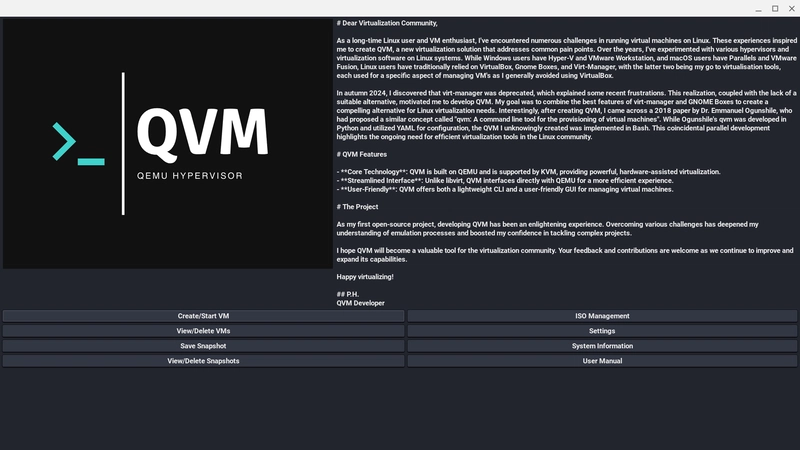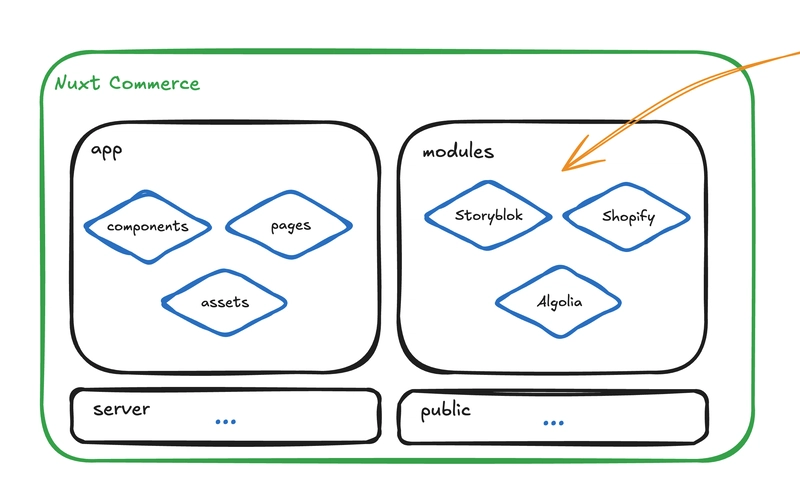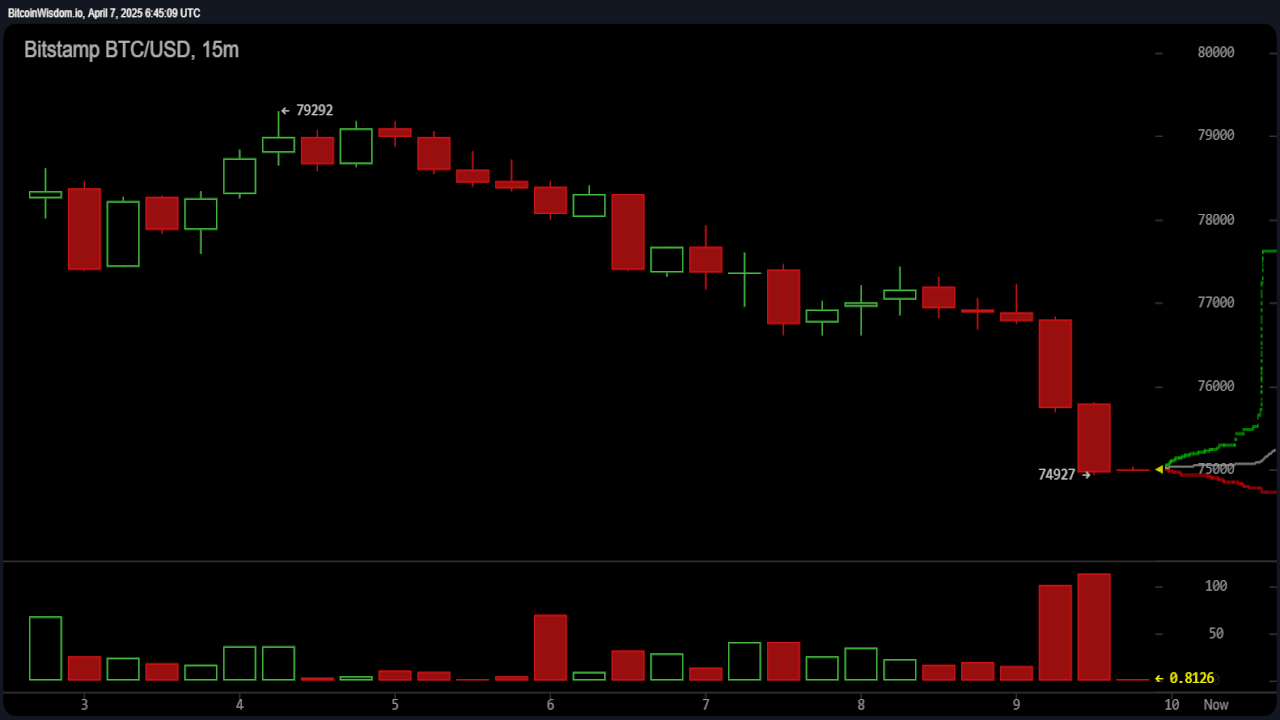QVM-Manager: The Linux Hypervisor You've Been Waiting For?
Is QVM-Manager the next big thing in Linux virtualisation? QVM-Manager presents itself as a compelling alternative within the Linux virtualisation landscape, particularly for users seeking a lightweight and customizable solution. Compared to established options like VirtualBox and VMware Workstation, QVM-Manager emphasizes direct interaction with QEMU, aiming to reduce overhead and enhance performance. This focus on efficiency is a key differentiator, especially for users working on resource-constrained systems or those who prioritize minimal footprint. While VirtualBox and VMware offer extensive feature sets and broad compatibility, they can sometimes introduce performance bottlenecks due to their more complex architectures. QVM-Manager's direct QEMU integration aims to address these issues. Furthermore, QVM-Manager addresses the gap left by the deprecation of virt-manager, providing a user-friendly GUI for QEMU management. QEMU's command-line interface, while powerful, can be intimidating for many users. QVM-Manager's GUI simplifies common tasks like VM creation, configuration, and snapshot management, making QEMU more accessible. In comparison, GNOME Boxes offers a simpler, more streamlined approach to virtualisation, but QVM-Manager aims to provide a balance between ease of use and granular control, offering more advanced configuration options through its GUI and CLI. The project also highlights its focus on facilitating cybersecurity workflows, providing tools for creating and managing isolated environments, which can be crucial for security testing and analysis. The project's reliance on Bash scripting and the noted challenges with shell environment compatibility, especially outside of a bash shell, currently set it apart from more mature and cross-platform virtualisation solutions. The developer acknowledges these limitations and is actively working on improving compatibility. The emphasis on open-source development and community contributions is also a significant aspect of QVM-Manager, potentially fostering a more tailored and responsive virtualisation solution for Linux users. The focus on direct QEMU interaction for enhanced efficiency combined with a user-friendly GUI makes QVM-Manager a notable new player in the Linux virtualisation space. Click this link to head other to the projects github page... https://github.com/RoyalHighgrass/QVM-Manager. Give QVM-Manager a try today and let us know what you think in the comments. Thank you for reading, and happy virtualising!

Is QVM-Manager the next big thing in Linux virtualisation?
QVM-Manager presents itself as a compelling alternative within the Linux virtualisation landscape, particularly for users seeking a lightweight and customizable solution. Compared to established options like VirtualBox and VMware Workstation, QVM-Manager emphasizes direct interaction with QEMU, aiming to reduce overhead and enhance performance. This focus on efficiency is a key differentiator, especially for users working on resource-constrained systems or those who prioritize minimal footprint. While VirtualBox and VMware offer extensive feature sets and broad compatibility, they can sometimes introduce performance bottlenecks due to their more complex architectures. QVM-Manager's direct QEMU integration aims to address these issues.
Furthermore, QVM-Manager addresses the gap left by the deprecation of virt-manager, providing a user-friendly GUI for QEMU management. QEMU's command-line interface, while powerful, can be intimidating for many users. QVM-Manager's GUI simplifies common tasks like VM creation, configuration, and snapshot management, making QEMU more accessible. In comparison, GNOME Boxes offers a simpler, more streamlined approach to virtualisation, but QVM-Manager aims to provide a balance between ease of use and granular control, offering more advanced configuration options through its GUI and CLI. The project also highlights its focus on facilitating cybersecurity workflows, providing tools for creating and managing isolated environments, which can be crucial for security testing and analysis.
The project's reliance on Bash scripting and the noted challenges with shell environment compatibility, especially outside of a bash shell, currently set it apart from more mature and cross-platform virtualisation solutions. The developer acknowledges these limitations and is actively working on improving compatibility. The emphasis on open-source development and community contributions is also a significant aspect of QVM-Manager, potentially fostering a more tailored and responsive virtualisation solution for Linux users. The focus on direct QEMU interaction for enhanced efficiency combined with a user-friendly GUI makes QVM-Manager a notable new player in the Linux virtualisation space.
Click this link to head other to the projects github page... https://github.com/RoyalHighgrass/QVM-Manager. Give QVM-Manager a try today and let us know what you think in the comments. Thank you for reading, and happy virtualising!









































































































































































![[The AI Show Episode 142]: ChatGPT’s New Image Generator, Studio Ghibli Craze and Backlash, Gemini 2.5, OpenAI Academy, 4o Updates, Vibe Marketing & xAI Acquires X](https://www.marketingaiinstitute.com/hubfs/ep%20142%20cover.png)































































































































![[DEALS] The Premium Learn to Code Certification Bundle (97% off) & Other Deals Up To 98% Off – Offers End Soon!](https://www.javacodegeeks.com/wp-content/uploads/2012/12/jcg-logo.jpg)

![From drop-out to software architect with Jason Lengstorf [Podcast #167]](https://cdn.hashnode.com/res/hashnode/image/upload/v1743796461357/f3d19cd7-e6f5-4d7c-8bfc-eb974bc8da68.png?#)








































































































.png?#)


































_Christophe_Coat_Alamy.jpg?#)



.webp?#)






































































































![Apple Considers Delaying Smart Home Hub Until 2026 [Gurman]](https://www.iclarified.com/images/news/96946/96946/96946-640.jpg)
![iPhone 17 Pro Won't Feature Two-Toned Back [Gurman]](https://www.iclarified.com/images/news/96944/96944/96944-640.jpg)
![Tariffs Threaten Apple's $999 iPhone Price Point in the U.S. [Gurman]](https://www.iclarified.com/images/news/96943/96943/96943-640.jpg)

































































































































